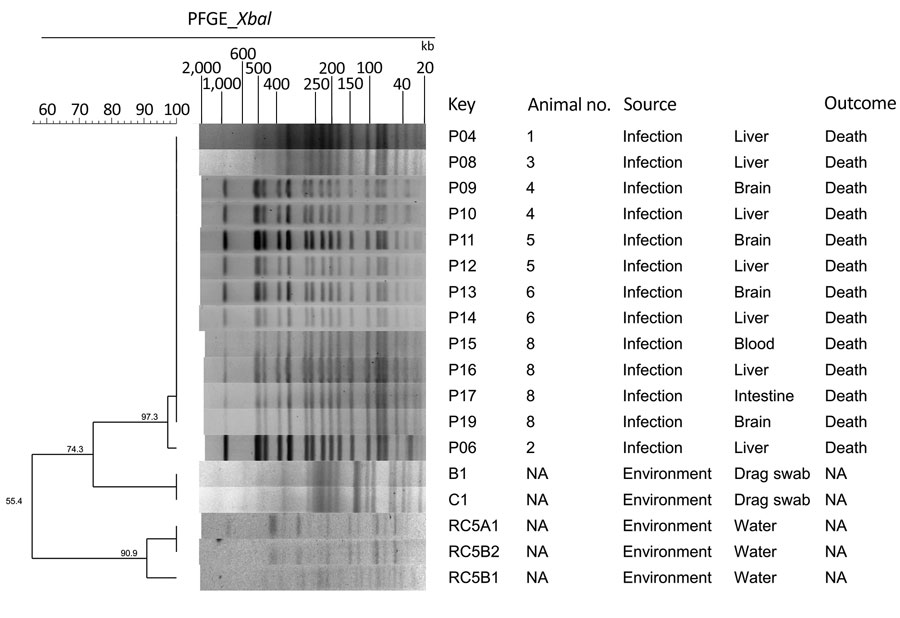Volume 26, Number 12—December 2020
Dispatch
Hypervirulent Klebsiella pneumoniae as Unexpected Cause of Fatal Outbreak in Captive Marmosets, Brazil
Figure 2

Figure 2. Dendrogram and pulsed-field gel electrophoresis (PFGE) typing of XbaI-restricted Klebsiella pneumoniae strains from captive marmosets in investigation of a fatal epizootic caused by highly virulent K. pneumoniae sequence type 86 in Brazil, 2019. PFGE profiles were defined based on 100% Dice similarity cutoff value of the UPGMA clustering method (1.5% optimization; 1.5% tolerance). The Universal Size Standard Strain H9812 (Salmonella Braenderup) was used as reference in all gels. NA, not applicable.
Page created: October 13, 2020
Page updated: November 19, 2020
Page reviewed: November 19, 2020
The conclusions, findings, and opinions expressed by authors contributing to this journal do not necessarily reflect the official position of the U.S. Department of Health and Human Services, the Public Health Service, the Centers for Disease Control and Prevention, or the authors' affiliated institutions. Use of trade names is for identification only and does not imply endorsement by any of the groups named above.